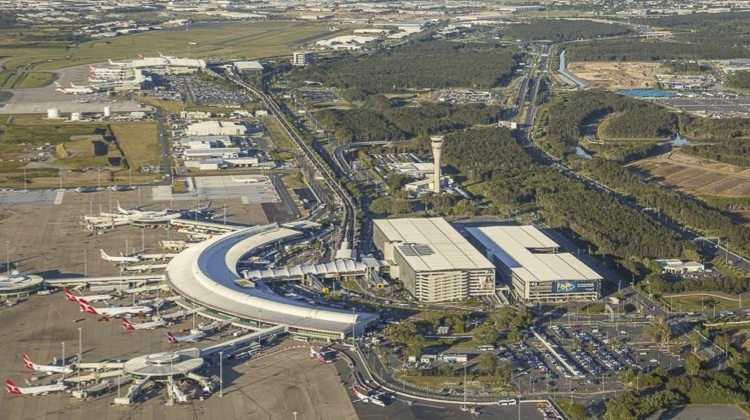
Joint-venture partners Caltex Australia and Shell Aviation Australia have switched on a new jet fuel pipeline at Brisbane Airport that doubles the potential fuel supply capacity to airline customers.
The 4.6km pipeline from the Viva Pinkenba fuel storage terminal to Brisbane Airport’s Joint User Hydrant Installation (JUHI) refuelling facility can carry 270 cubic metres of fuel per hour, compared with 130 cubic metres per hour using the previous pipeline.
Further, Caltex and Shell said on Wednesday the $16 million pipeline could potentially carry up to 500 cubic metres of fuel per hour, subject to pump upgrades, as well as improve supply chain flexibility and reliability, Caltex Australia general manager infrastructure operations Derek Styles said.
“This new infrastructure provides the airport with future flexibility to allow multiple suppliers to pump fuel to the airport during peak times, as well as increasing the rate at which the fuel can be delivered,” Styles said in a statement.
“The project has been delivered on-time and under-budget and included Australia’s longest horizontal directional drilling through alluvial ground. This was done to minimise the disruption to airport operating runways and taxiways.”
Brisbane Airport’s JUHI receives fuel via both the Caltex/Shell joint venture and from BP.
Shell Aviation Australia Director Richard Pereira said: “We have a long and proud history at Brisbane Airport, and this project will allow us to continue to service our customers and the flying public for many decades to come.”
Caltex said the new pipeline also freed up land at the airport, noting it had been “constructed along a pathway that will ensure previously-unavailable land can now be used by Brisbane Airport for supporting infrastructure and commercial uses.”
Brisbane Airport general manager of commercial businesses John Tormey said the freed-up land would be developed by the airport’s property division BNE Property.
“It allows more space and flexibility on sites within the booming Airport South precinct, popular with industrial businesses seeking close proximity to the terminals and major roadways,” Tormey said.
Brisbane Airport has forecast passenger numbers to reach 49 million by 2034. The airport handled 22.4 million passengers in 2015/16, up two per cent from the prior year.
Annual aircraft movements were projected to grow from about 225,000 now to 370,000 by 2034.
Brisbane Airport is the latest airport in recent times to receive a boost in fuel supply capacity. In February, Mobil Oil Australia said it would build a new pipeline for Melbourne Airport that would link its Yarraville fuel distribution terminal to Tullamarine’s main fuel storage depot.
A policy paper from The Board of Airline Representatives of Australia (BARA), which represents 29 international airlines that fly into and out of Australia, released in December 2014 called for reform of the jet fuel supply supply chain through opening up competition and clearing bottlenecks.
















Tony
says:Fuel normally measured by volume, not area. Is this something unique to pipelines? Or is this a press release error?
australianaviation.com.au
says:unfortunately Tony it was our error, which has not been fixed. Apologies.
Peter R
says:Cubic meters per hour is a recognized unit of measurement, This is used extensively when pumping water or fuel in large volume/quantities. , Folks in the industries mentioned shortcut this term to “cubes” and we all know what is meant by it. The unit is; m3/hr.
Mr Hansen
says:^Correct. 1 cube is 1000 litres.